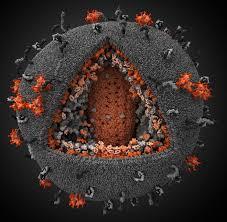
Animators and Multimedia Artists held about 64,400 jobs in 2014, with a projected six percent increase in employment for the 2014-2024 decade. At a six percent increase, which is as fast as average for all occupations, the industry will add close to 4,000 new jobs in the coming years. While most of these jobs will be in the Motion Picture and Video Industries, several others are gaining ground and some might surprise you. According to the Bureau of Labor Statistics (BLS), the industry with the second highest level of employment for animators is Computer Systems Design and Related Services. The next highest is Software Publishing, followed by Advertising, Public Relations, and Related Services. Other Information Services rounds out the list of top five industries with the highest levels of employment for animators.
What all of this means is animators are no longer restricted to working in the highly competitive entertainment industry. Even better is, many of these alternative industries actually pay more. For example, animators working in Other Information Services average $82,940 (mean wage) per year, while those working in Software Publishing average $76,920 per year. By comparison, animators working in the Motion Picture and Video Industries average $73,270 per year.
The road to becoming an animator in any of these growing (and lucrative) industries begins with choosing the right animation program. Fortunately, today’s animation programs offer a range of minors, concentrations, and even certificates that can help prepare students for a career outside of entertainment. One focus area worth considering is Science Visualization (SV).
Science Visualization is “the representation of data graphically as a means of gaining understanding and insight into the data,” explains Georgia Tech’s College of Computing (CC). “From a computing perspective, SciVis is part of a greater field called visualization. This involves research in computer graphics, image processing, high performance computing, and other areas. The same tools that are used for SciVis may be applied to animation, or multimedia presentation, for example.”
“Sometimes referred to in shorthand as SciVis” or “Visual Data Analysis,” Science Visualization is an emerging science whose “strategy is to develop fundamental ideas leading to general tools for real applications. This pursuit is multidisciplinary in that it uses the same techniques across many areas of study,” says Georgia Tech CC. As such, animation students who choose a concentration or minor in Science Visualization will have access to an assortment of courses not typically offered in pure animation programs. The following is a sampling of course offerings for the Science Visualization Minor at USC’s John C. Hench Division of Animation & Digital Arts (Hench DADA):
-Data Analysis in the Earth and Environmental Sciences
-Geobiology and Astrobiology
-Geosystems
-Science Fiction
-Studies in Art, Science, and Technology
-Studies in Visual and Material Culture
-The Global Environment
-Visual Techniques in Anthropology: Stills
Available animation courses for the program include:
-Animation Theory and Techniques
-Character Development for 3D Animation and Games
-Creative Coding for the Web
-Digital Effects Animation
-Digital Lighting and Rendering
-Digital Studies Symposium
-Introduction to 3D Computer Animation
-New Media for Social Change
-Organic Modeling for Animation
-The World of Visual Effects
-Visual Effects
Besides Georgia Tech CC and Hench DADA, SV programs are offered through the College of Architecture, Department of Visualization at Texas A&M University, Full Sail University, and the School of Computing at University of Utah, to name a few. The University of Utah combines Graphics & Visualization, so course offerings are even more diverse. Just a few course titles for the program include Visualization, Physics-based Animation, Interactive Computer Graphics, Human/Computer Interaction, 3D Computer Vision, Virtual Reality, and Computational Topology.
The program level students ultimately choose will depend on factors ranging from the industry they would like to break into to whether or not they already have an animation or related degree. Some schools offer both undergraduate and graduate degree programs in Science Visualization and related areas, while others offer minors, concentrations and/or certificates. Still, others offer the opportunity to create a custom concentration, so students may choose from courses across departments and schools.
To begin your search for animation schools that may offer a Science Visualization focus, take a look at our list of Top 50 Animation Schools and Colleges in the U.S. – 2016.
Sources
"Graphics & Visualization." University of Utah, School of Computing. University of Utah, 2017. Web. 28 Jan. 2017.
"Occupational Employment and Wages May 2015 - Multimedia Artists and Animators." U.S. Bureau of Labor Statistics. United States Department of Labor, 30 Mar. 2016. Web. 28 Jan. 2017.
"Simulation & Visualization Bachelor's Degree." Full Sail University - Technology. Full Sail University, n.d. Web. 28 Jan. 2017.
"Summary: Multimedia Artists and Animators." Occupational Outlook Handbook 2016-17 Edition. United States Department of Labor, 17 Dec. 2015. Web. 28 Jan. 2017.
USC Cinematic Arts | John C. Hench Division of Animation & Digital Arts. University of Southern California School of Cinematic Arts, 2001-2017, 2016. Web. 28 Jan. 2017.
"Use of Computer Animation in Industries Other than Media and Entertainment." Maya Academy of Advanced Cinematics (MAAC) India Academy Animation & VFX Industry Blog. Aptech, 31 Aug. 2012. Web. 28 Jan. 2017.
"Visualization." College of Architecture, Department of Visualization. Texas A&M University, 2017. Web. 28 Jan. 2017.
"What Is SciVis?" College of Computing. Georgia Tech, n.d. Web. 28 Jan. 2017.

